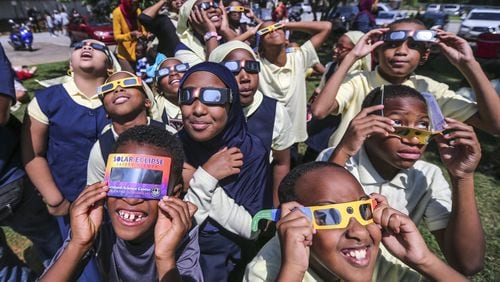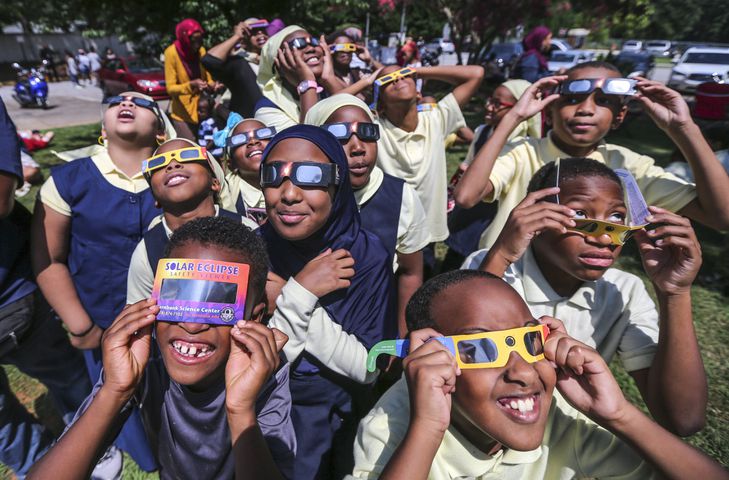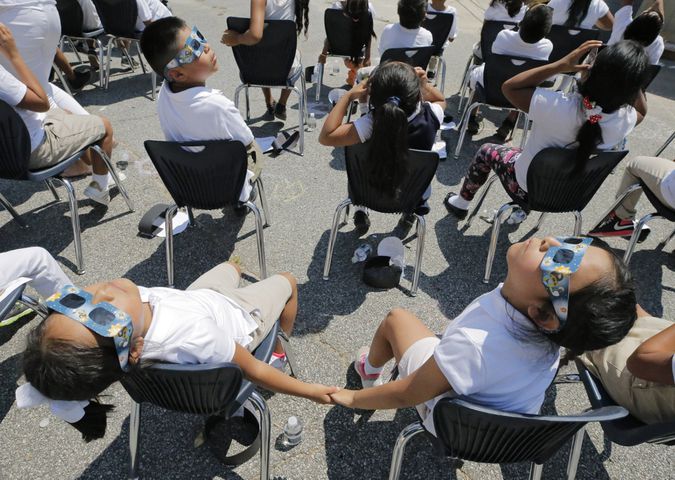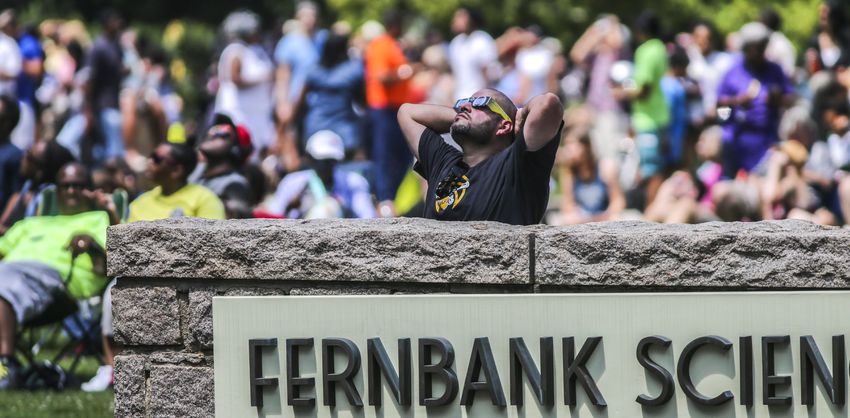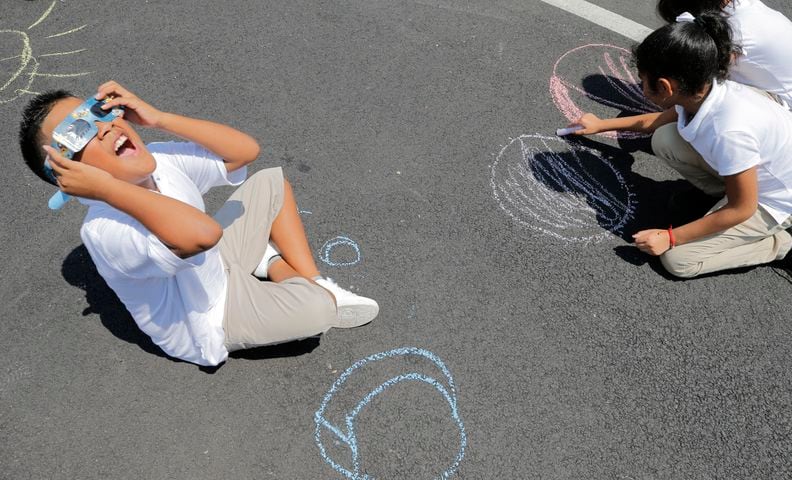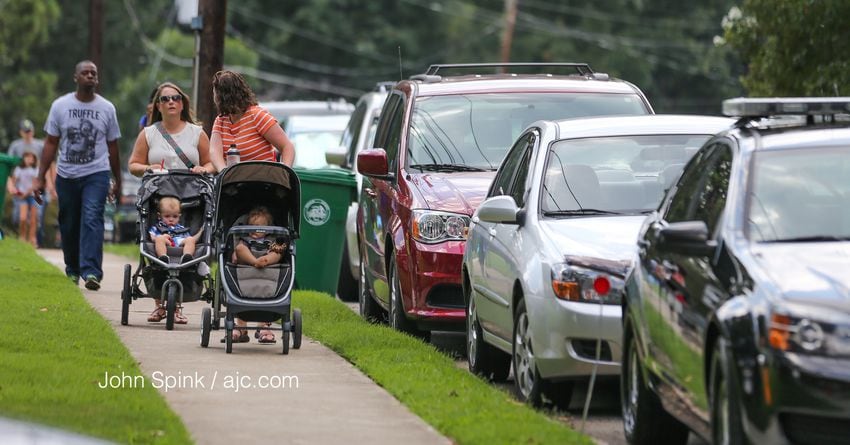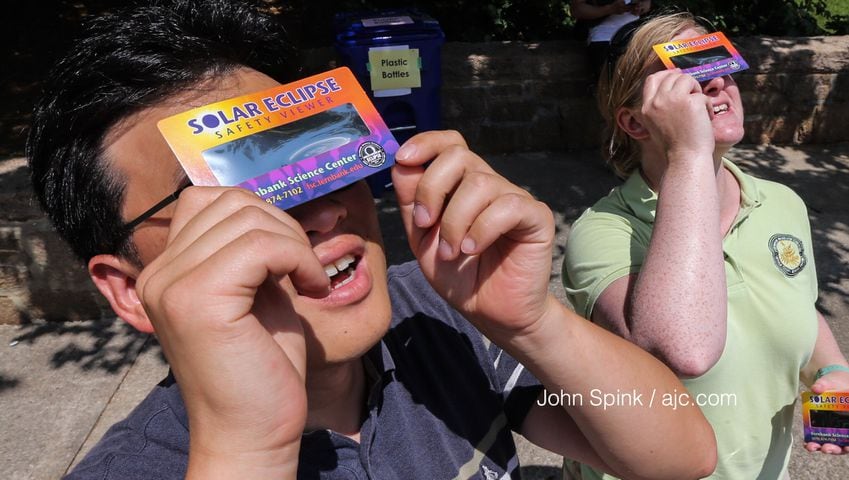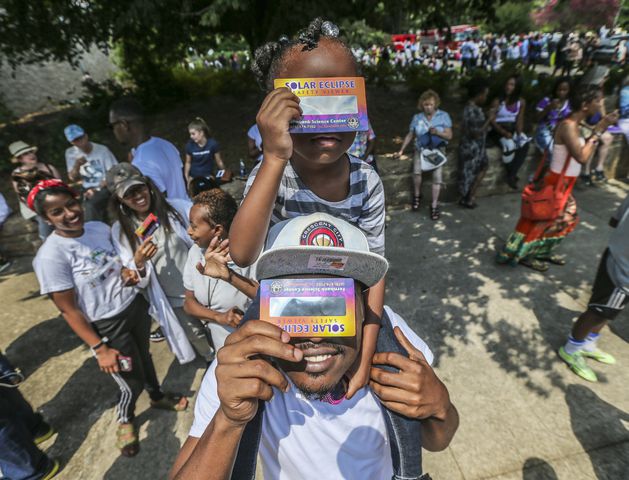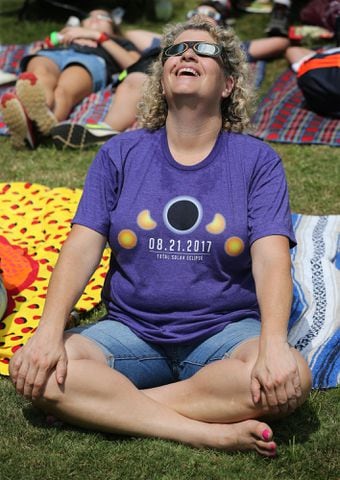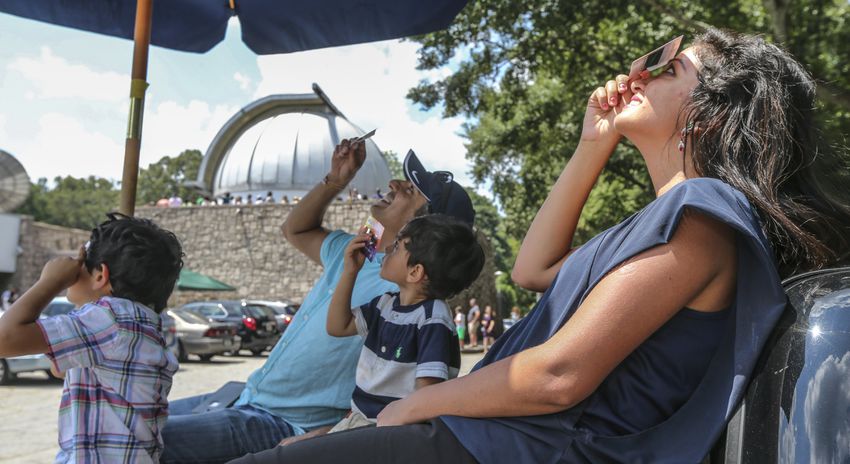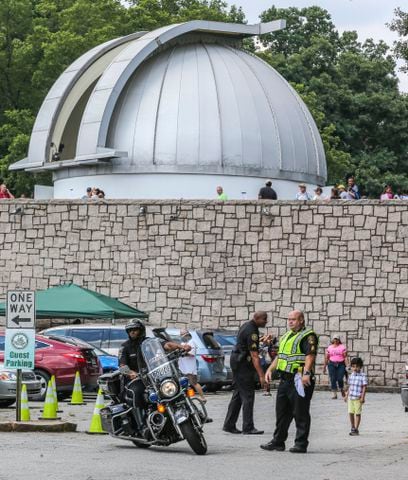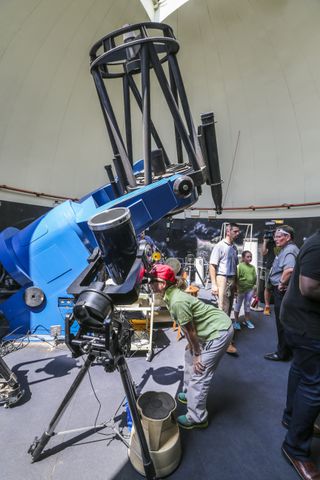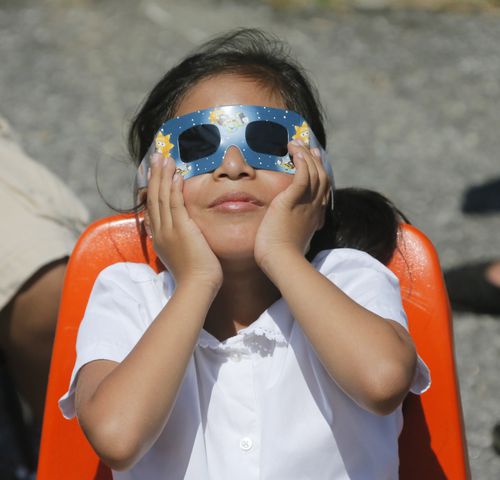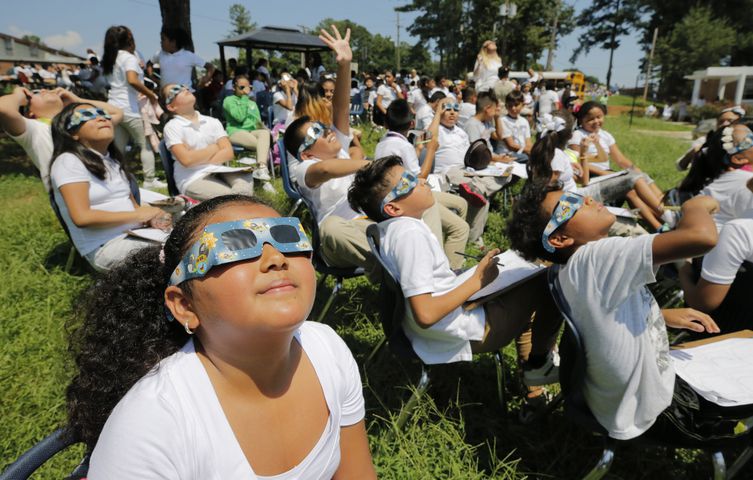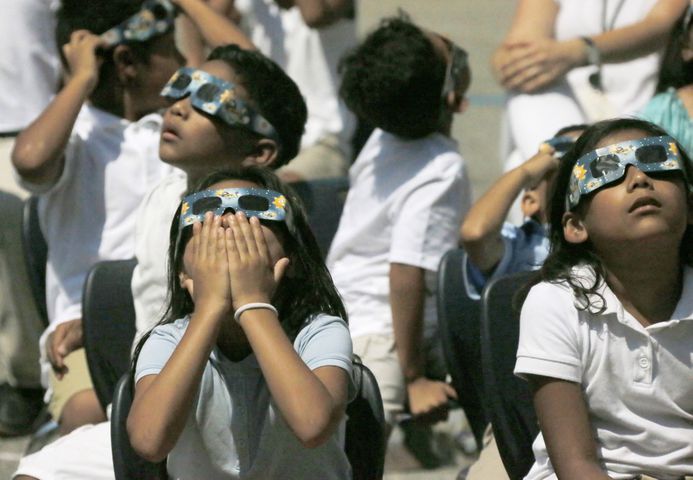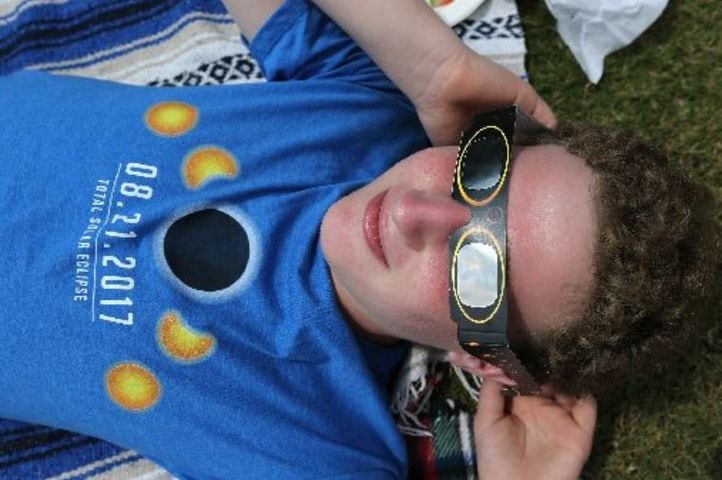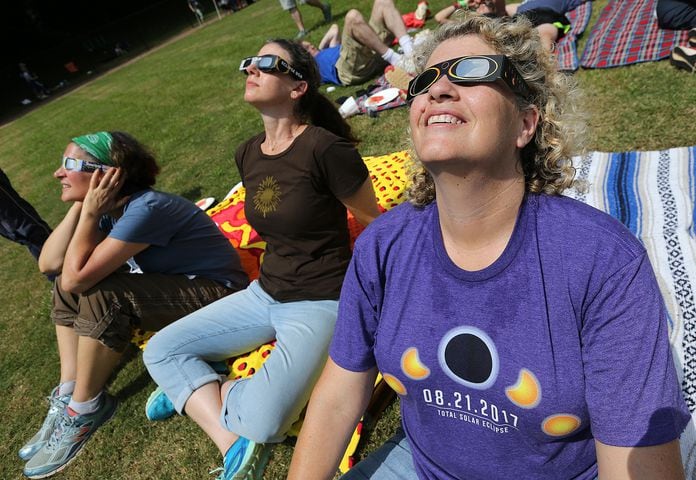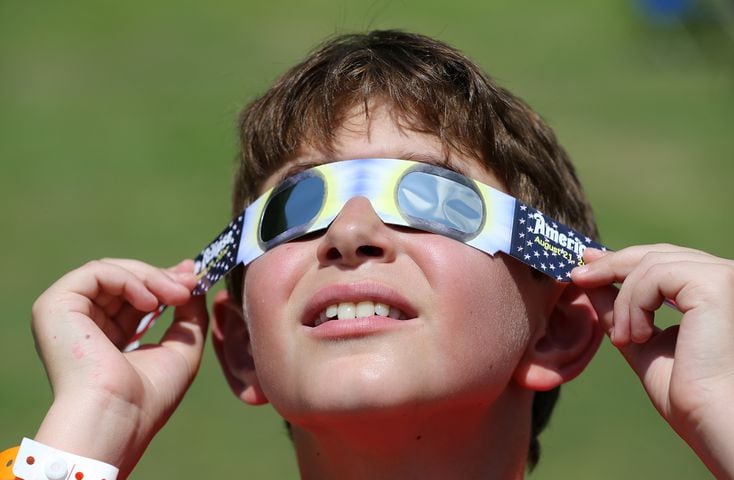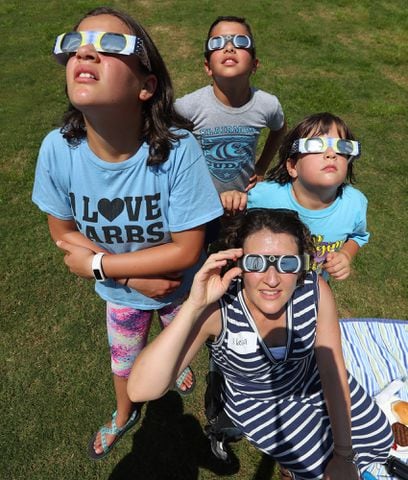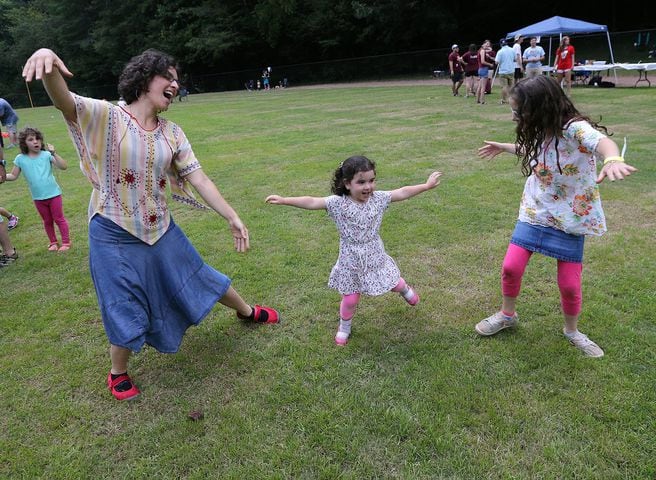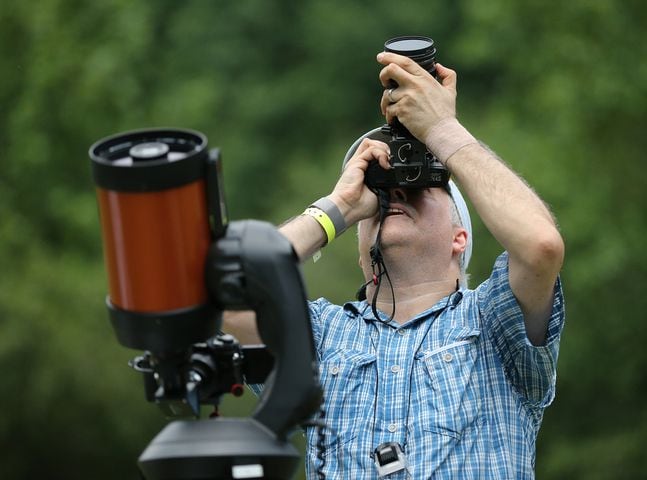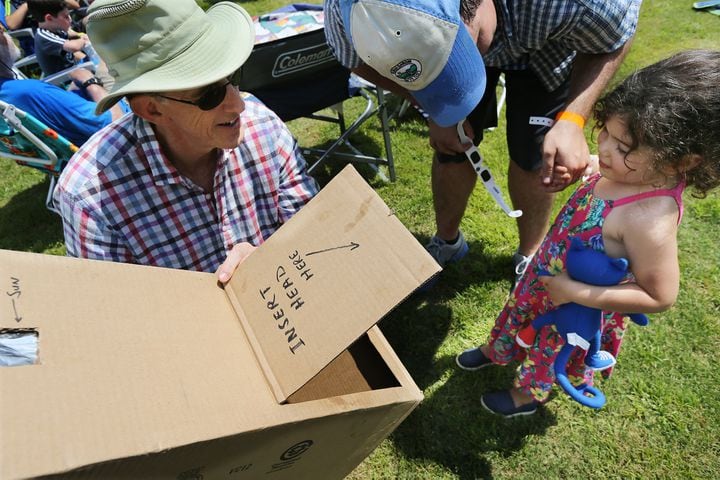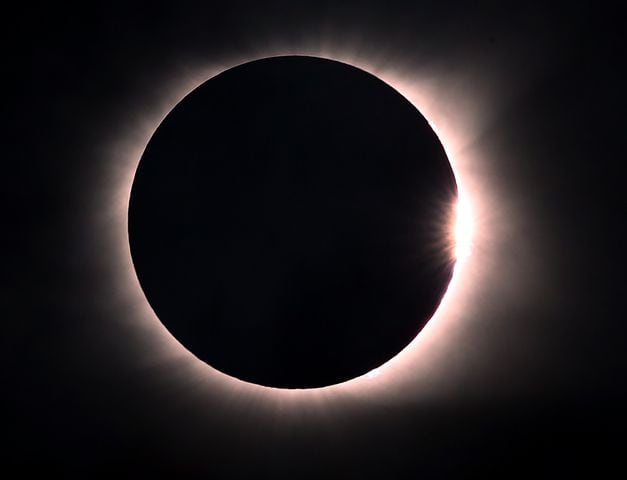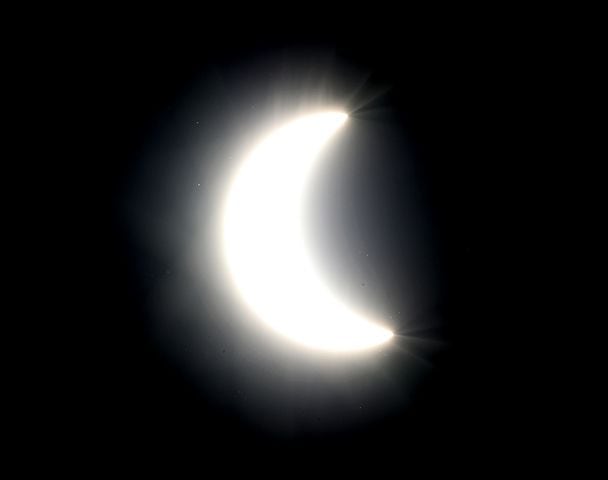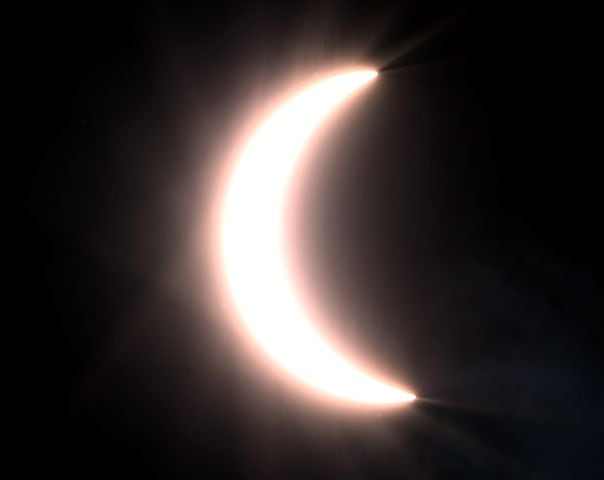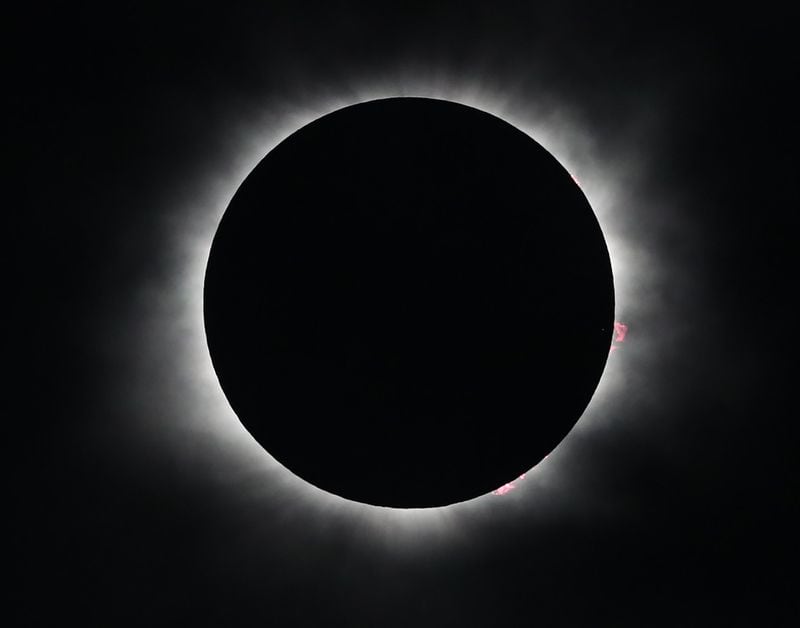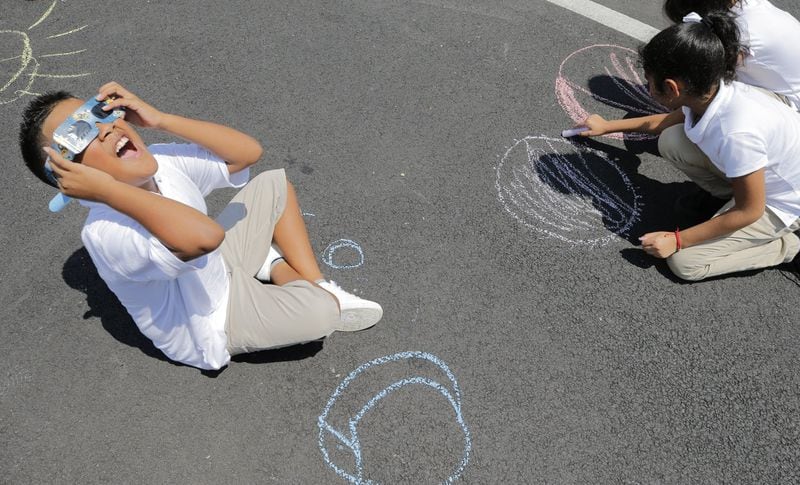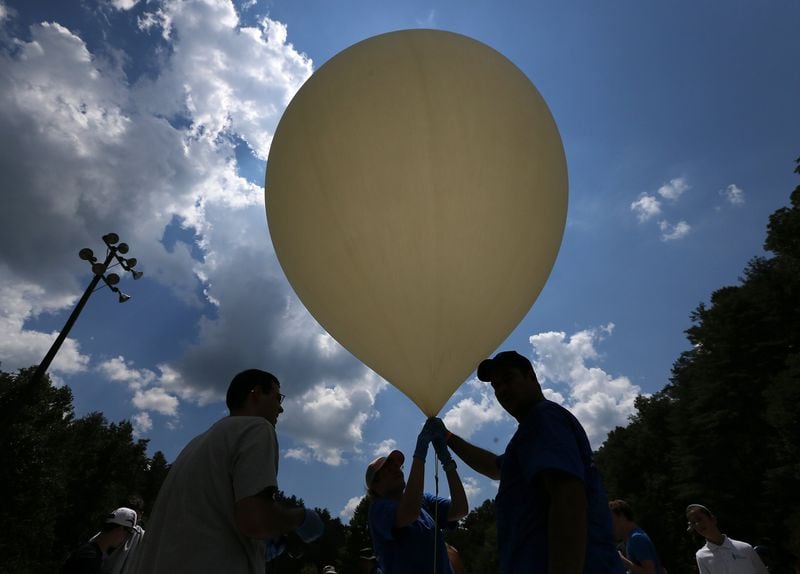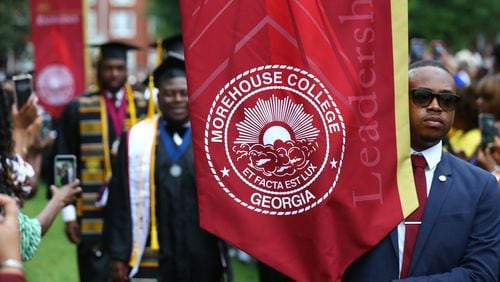At first Monday started off hot and cloudless, with the sky an uncut blue. Then clouds rolled over the sun at 2 p.m. at Ramah Darom, a Jewish summer camp facility deep in the Rabun County mountains.
The sun continued to peek in and out of the clouds for the next few minutes, as the moon crept across its face. Several hundred eclipse watchers, lying on blankets at the camp’s softball field, hoped for the best and held their breath.
Then at 2:30 p.m. or so the sun found a peephole. The group fell silent and waited. The sun went black and the corona flared into the still-blue sky. Two minutes later, a standing ovation. The total solar eclipse had arrived.
Similar celestial experiences were happening throughout the nation as the first total eclipse to travel from coast to coast across the U.S. since 1918 landed on the shores of Oregon. And as the spectacular phenomenon made its way to the southeastern part of the United States, northeastern Georgia was right in its path. Along 12 miles, onlookers in Georgia were left in the moon’s complete shadow.
;For a few minutes, the crowd gathered at the Dillard House in Rabun County issued a collective groan. Midday through the eclipse, clouds began to roll in, the wind picked up, and a summer shower seemed imminent. They had waited for this moment for weeks. Even months. Each time the sun peeked through there were cheers and shouts, only to be hushed when the clouds returned.
Tammy Watkins of Sandy Springs never considered throwing in the towel. She told her husband, Reginald, that it was just like being at a concert. “You stay for the encore,” she said. “It was worth the wait.”
Watkins became emotional when the clouds parted at just the right moment. And they got what they wanted — a total solar eclipse.
»» MORE: Police, schools, teams react on social media
»» How to watch the 2024 solar eclipse visible in the US
The Dillard House, which is celebrating its centennial, is nestled in what’s known as the “path of totality” — an area where people could experience the full effect of the solar eclipse. Hotels, camping sites, and private residences in Rabun County were snatched up months ago. People began arriving well before daybreak.
“This is perfect,” Watkins said.
Nearby, Jerrik Arango sat back in awe. He moved to Atlanta about a year ago from Fort Lauderdale, Fla. He was struck by the amazing whiteness and brilliance of the corona. “It was very cool,” he said. Although some viewers scattered early — either to avoid a possible rain shower or certain traffic — he was determined to stay put.
“We had about 25 minutes left. I felt like the clouds were going to eventually move out.”
Lisa Egan, an educational consultant, and her 18-year-old son Cassidy Soloff, flew into Atlanta on Thursday from New York City. They spent the first few days at a hotel in Rabun County, and Sunday night in their rental car. “I’ve never seen an eclipse before, and I’ve heard that a total solar eclipse is like nothing you will ever see,” Soloff said.
Natalie Dillard, whose family owns the Dillard House, said they had pre-sold 600 parking spots, and more than 700 barbecue meals. They also had a few hundred pairs of the much sought after eclipse glasses. She said the family decided not to raise the nightly rate, and ran the event like a well-oiled machine.
In Nashville, Tenn., Erik Gottfried recalled experiencing a partial solar eclipse while growing up in Ohio in 1991. But he said Monday's eclipse was much, much better.
“I didn’t realize just how dark it would get and how quickly it would happen,” Gottfried said.
“Being able to actually look directly during that minute and a half that we had totality was unbelievable, and it’s great that the clouds broke just enough, too.”
Credit: Bob Andres
Credit: Bob Andres
Non-locals began booking hotel rooms in Nashville a year ago to view the eclipse.
“I knew the eclipse was coming, and I always wanted to go to Nashville at some point, so it made a good time,” said David Bettwy, in town from Los Angeles.
For a day — or more precisely for about two and a half minutes on Monday — Columbia, S.C., became the center of the universe. Thousands upon thousands came to Georgia’s eastern neighbor to be in the path of totality.
Dozens of events filled the city with eclipse chasers. Bars handed out eclipse glasses with every drink. The minor league baseball team paused its game to witness the astronomical extravaganza.
In the end, the eclipse was a great excuse to party. And this was the place for people who wanted to do it right. Anne Earle wasn’t satisfied that she’d only see 90-something percent of the eclipse from her home in Decatur. She wanted to take off her paper-and-plastic eclipse glasses — which make people look like they’re watching a 3-D horror flick from the fifties—and witness the corona, which you can only do when there is a full eclipse.
As a kid, she would spend hours reading books about the stars and planets.
“But I’ve never witnessed a total eclipse,” she said. “Now it was so close I couldn’t resist.”
In a vast parking lot outside a South Carolina stadium, many people were in full-tilt tailgating mode. They brought canopies, telescopes, chairs, barbecue grills. Some even brought giant fans, and generators to run them, in anticipation of temperatures above 90 degrees.
At roughly 2:40 in the afternoon, the full effect of the eclipse made itself known. All heads turned skyward. The daylight dimmed, as though the world were lit by a soft-glow light bulb. It never went totally dark.
“It’s like the sun is setting in midday,” said Sarah Harrington, 26, of Columbia.
The searing heat cooled a bit. Many people cheered while others watched in reverential silence.
“Awesome.”
“Freaky.”
“It’s like a 360-degree sunset.”
Two guys fist-bumped. Somebody noticed that there were no birds in the sky.
“It’s the second-most beautiful thing I’ve ever seen,” said Jason Swartout, from Pennsylvania. “The first was seeing my daughters being born.”
Then it was over. And as everyone packed up and headed away, a gentle, cooling rain washed over them.
